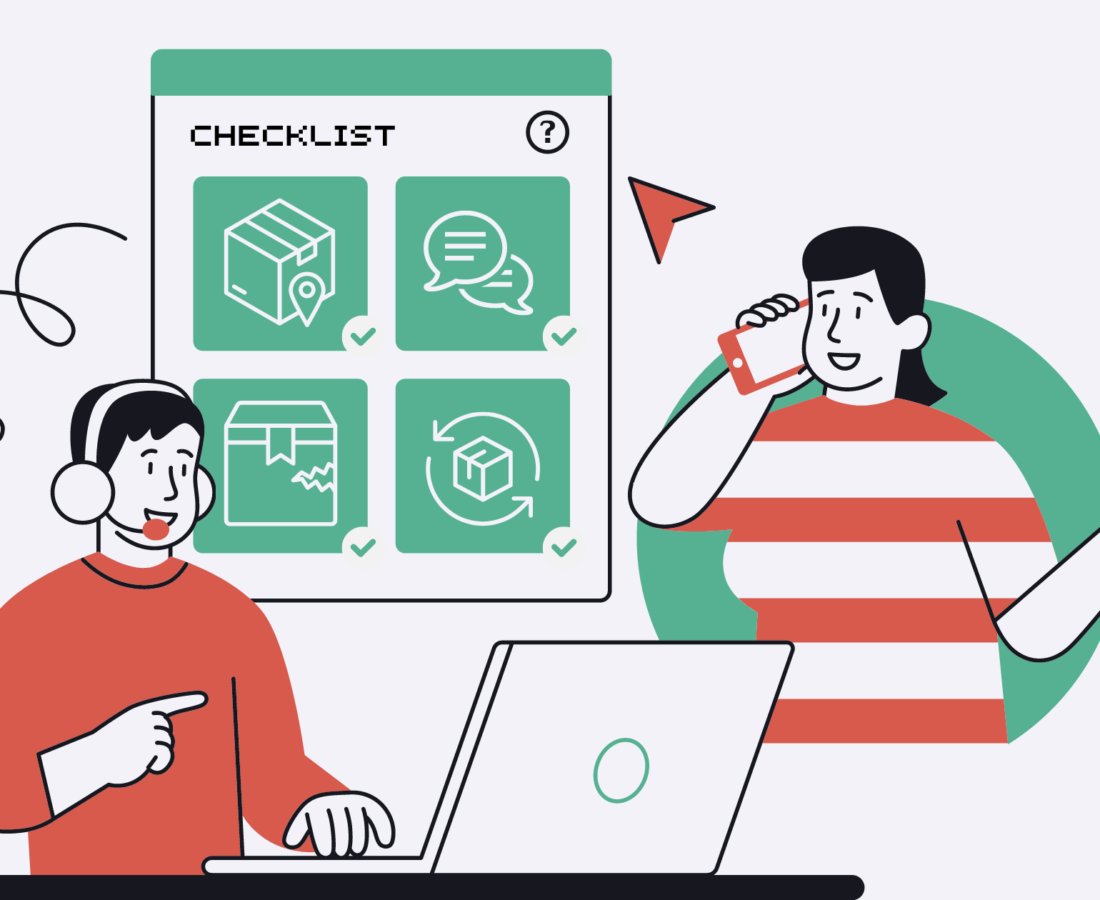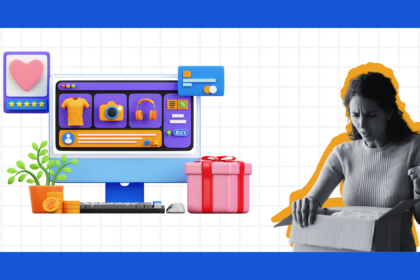The post-purchase is an exciting phase for your customers, as it is the last station before they get to their destination called happiness from collecting their orders. However, with most e-commerce merchants not having much awareness about the post-purchase phase and unwillingly neglecting its events, the ‘exciting phase’ is also one of the ‘most anxious’ phases for customers.
This anticipation of order deliveries facing issues (understandable, as 1-in-5 parcels shipped face delivery issues) leads to customers bombarding your support team with WISMO or Where IS My Order? Inquiries.
WISMO requests alone make up approximately 50% of the overall customer inquiries.
Stats highlight that customers’ expectations when it comes to delivery and returns experiences are only becoming higher, yes — but when you think about it, here are some of their primary expectations:
- “I’d like to stay in the know of my package at all times”
- “If there’s an issue with my package, I’d like to know it beforehand”.
It sounds quite reasonable if you ask.
However, there is an increased frustration among customers because most businesses they shop with fall under the category of not meeting their “bare minimum” expectations.
Forget the stats for a moment — as an e-commerce merchant, you would’ve witnessed countless times, when a customer contacts your support team demanding to know the status of their orders as they grew increasingly anxious about its arrival.
Not just for the sake of your customers, even your support reps would agree that frequently tending to post-purchase issues and pacifying disgruntled customers only consumes all of your support team’s time, thereby preventing them from tending to other important tasks at hand.
30% of the customer support team’s time and effort is WASTED handling repetitive delivery and return-related inquiries
The good news is that with the right course of action, post-purchase queries can be contained extensively so that your support team now saves quality time and you can improve customer satisfaction by mitigating frustrations.
Here’s a checklist containing steps that you can take to reduce customer queries (particularly WISMO) and provide a great post-purchase customer experience. Without further ado, let’s get started.
5-Point Checklist To Reduce Post-Purchase Customer Inquiries
1. Keep customers in the loop of their orders via delivery status updates
A. Automate important shipping notifications
In the era of instant gratification, the only thing that keeps customers from bombarding your business with order status inquiries or ‘WISMO calls’ is your initiative to keep them constantly updated on their orders in transit.
The best way to do this is to automate notifications for important shipping events such as order confirmed, shipped, out-for-delivery, etc. Such notifications assure the customer that their order is making its way and give them the confidence to keep shopping with you.
Remember, the key is to keep these notifications proactive and cover multiple channels such as email, SMS, or WhatsApp to reach customers where they are most active.
B. Make order tracking self-service
Another opportunity that you can create to keep your customers aware of their orders at all times is to simply enable them to track orders on their own.
Here’s how it can be done: once the order gets shipped, you can notify customers with a ‘track your order’ link or embed a button on your website or chat.
By tracking orders on their own, your customers can look up the status of their deliveries any time they need and thereby are less prone to get your support team’s help.
2. Fix delivery issues before they happen
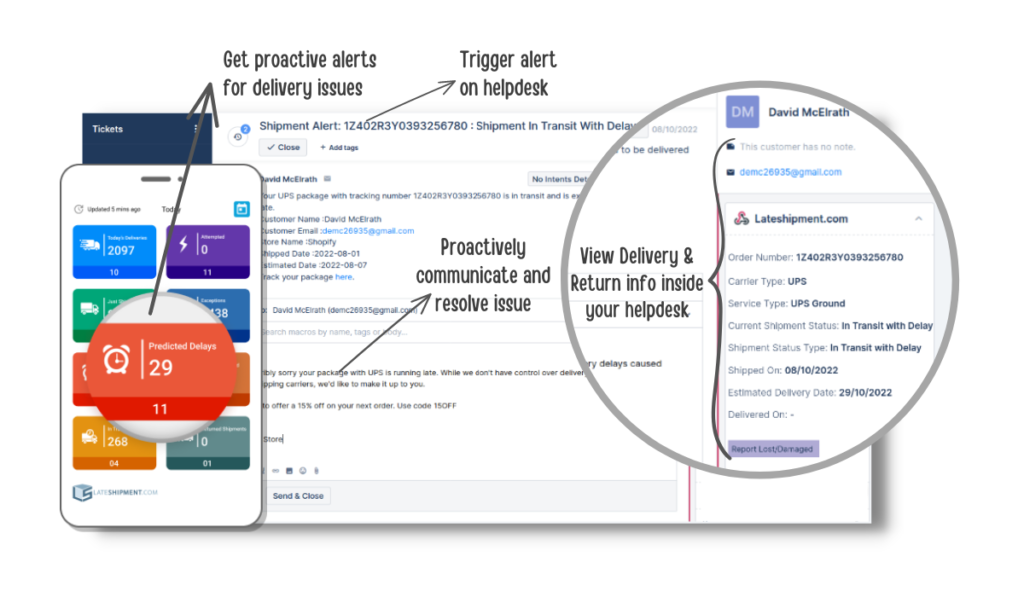
A. Receive alerts for critical issues
Staying reactive and doing damage control for delivery issues is an option. However, this may not be the best option, given that the customer is already impacted by the issue.
Here’s the thing about just being reactive to delivery issues: on the one hand, support reps are tired of constantly hearing angry rants from customers and tending to them. On the other hand, manually checking all of the customers’ parcels for issues and personally catering to them is an exhaustive and almost impossible task (especially if your shipping volume is a bit high).
A great way to get started on dealing with these two birds with one stone is to make use of a real-time tracking solution that triggers alerts for critical delivery issues like delays, lost in transit, failed delivery attempts, etc, and enables your support team to take proactive action.
B. Proactively resolve delivery issues
An extension of automated notifications and real-time alerts is the newfound ability to proactively reach out to customers whose parcels are facing critical delivery issues and take appropriate measures to course correctly.
Even if you are unable to fix the issue in the end, your customers will be appreciative of your efforts to rectify the issue and provide them with a positive experience.
Ultimately, this helps you not only mitigate their frustration levels but also create an opportunity to make them choose your brand again despite a delivery issue incident.
C. Integrate your help desk system
One of the major reasons for slow response times amidst a high incoming volume of queries, leading to poor satisfaction levels in customer service is the lack of sufficient data and the right tools to empower staff to help customers better.
For instance, in the case of a delay, your support representatives have to go back and forth on the carrier’s tracking page for package information and the help desk tool to fix the issue. However, this process is inefficient and as mentioned can negatively impact your Average Handle Time.
Instead, work with a real-time tracking solution that empowers support agents with information related to customer order delivery and return status inside your helpdesk so they can quickly respond and proactively resolve post-purchase issues without switching between tools.
3. Extend the capabilities of order-tracking
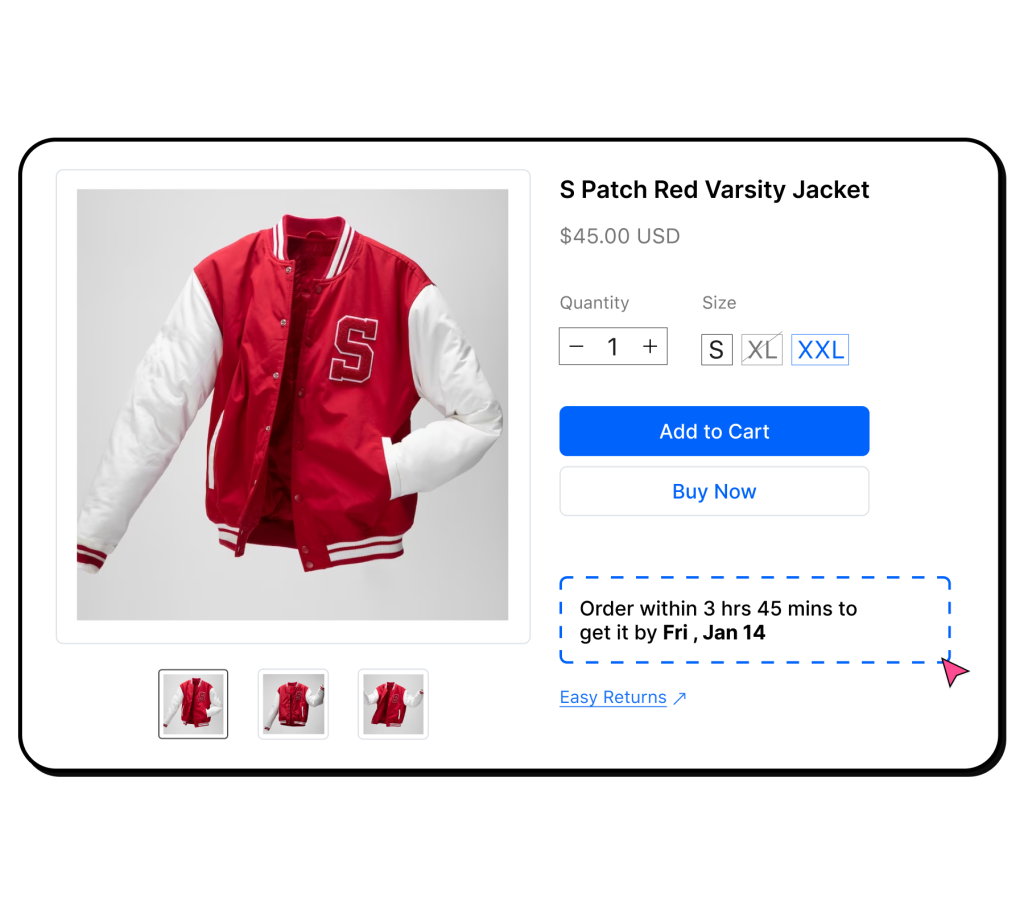
A. Share the estimated delivery timeline information
The customer gets curious about their order and asks you about the status. You can share a link to the carrier’s tracking page, where the customer tracks their order as it gets periodically updated. This is how order tracking has traditionally been done. But what if there’s a better way to do this?
Display estimated order delivery dates on your product, cart, and checkout pages to let the customer know when their order might be reaching them even before the order is placed. This way, your customers will be less prone to check with you for WISMO inquiries.
You can also add an order countdown timer to create an urgency. Ultimately, this can help you improve conversions and reduce cart abandonment.
B. Include options for the customer to easily access things directly from the tracking page
Another way to achieve a great post-purchase customer experience in the order phase is to include elements such as options to exchange or return, contact customer service, view offers of similar products that go along with their purchase, and much more.
By putting your focus on customer convenience via easy access, your customers are less likely to require your help while requiring an answer for frequent post-purchase queries such as “how to initiate a return?”.
A great CX paired with branding in the post-purchase helps in brand recall and increases the chances of repeat shopping.
4. Initiate steps to reduce post-purchase inquiries even before an order is placed
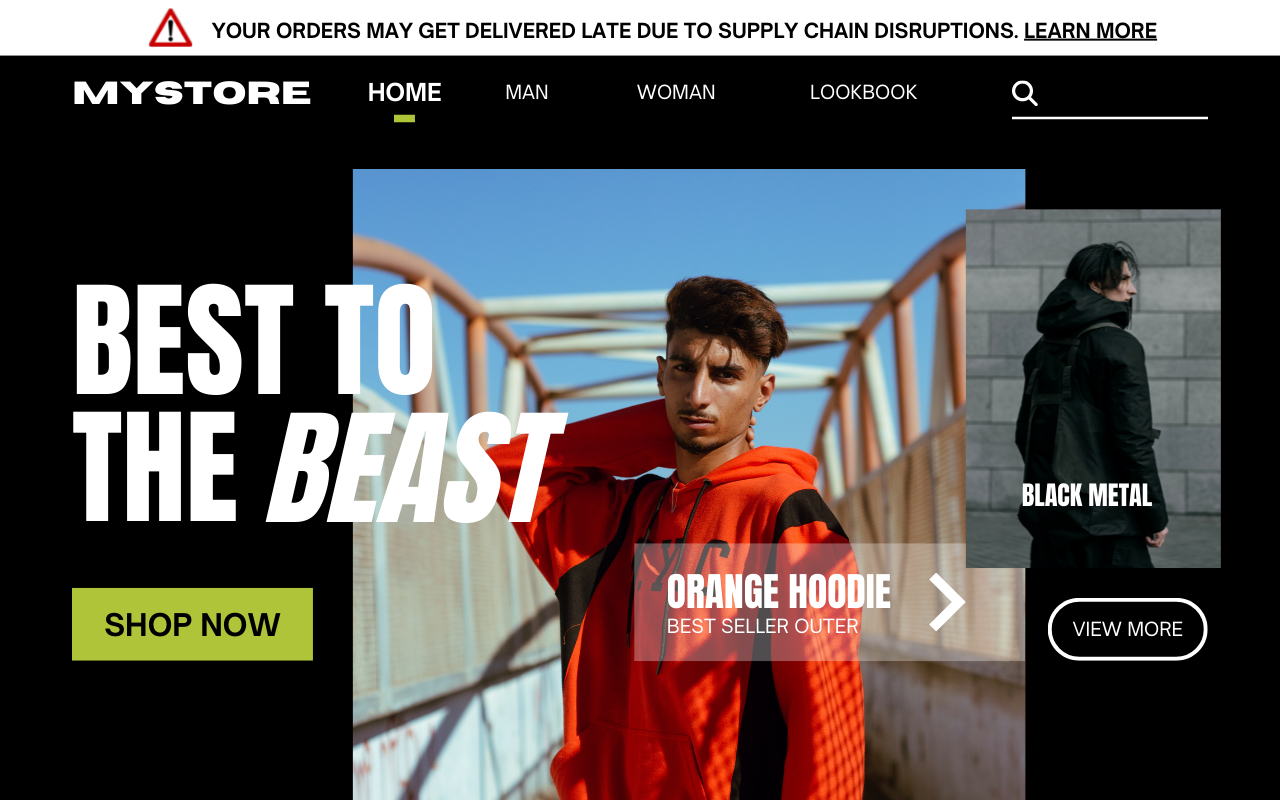
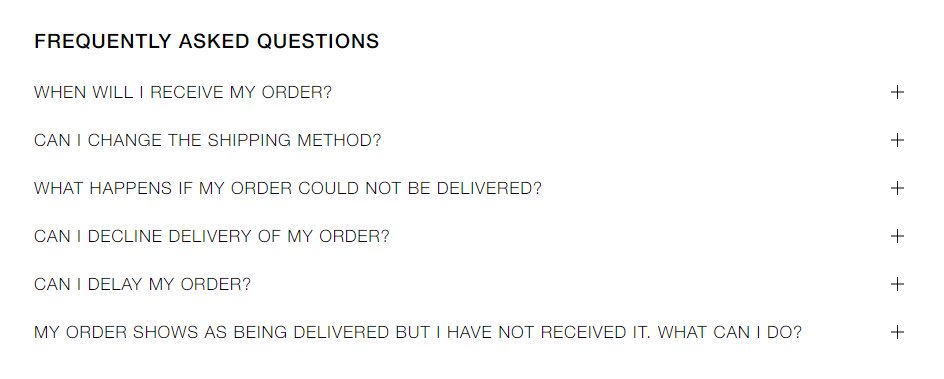
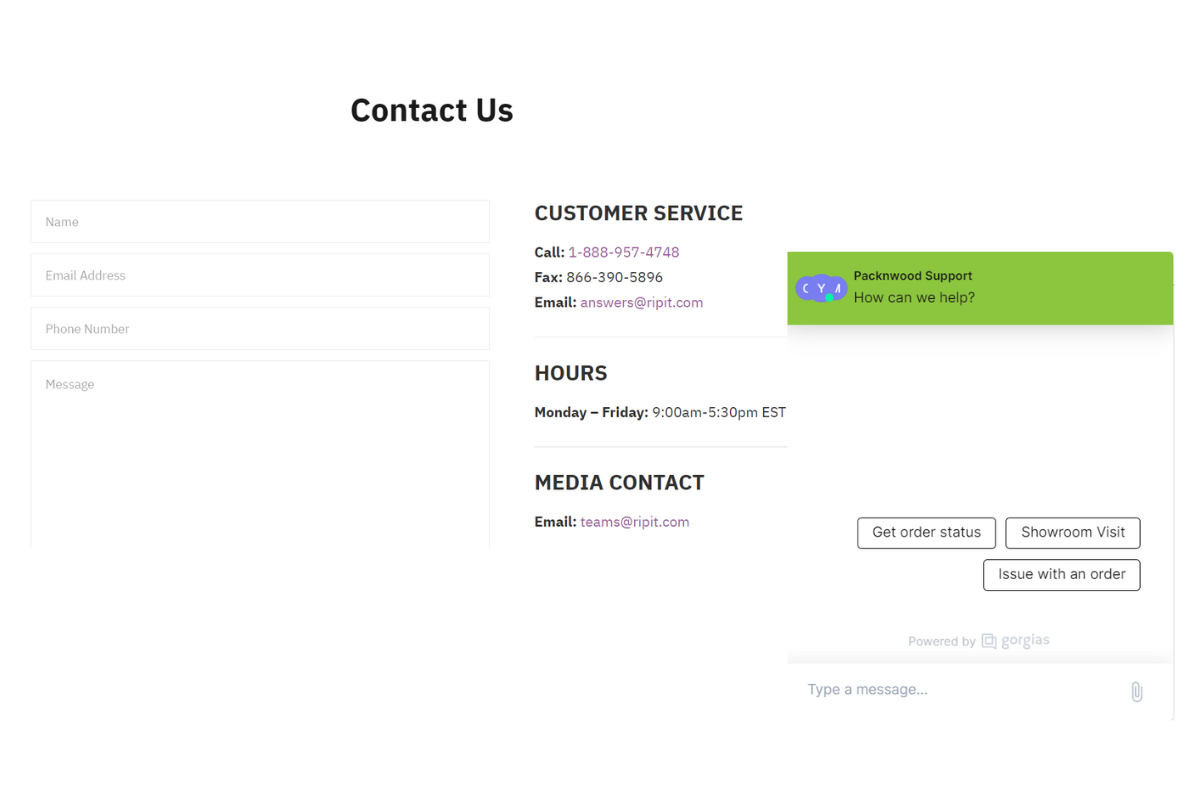
A. Include all necessary information on the shipping policy page
Not just a quality order tracking experience but much more can be done on your part, even before an order is placed which can reduce customer inquiries to a greater extent.
For starters, make sure to include information such as available shipping methods, international shipping options, and other FAQs such as how to edit order details such as updating the cart, changing delivery address, etc. on your shipping policy page.
P.S. Make sure these page(s) are frequently updated from time to time to prevent any miscommunication.
B. Let customers know about uncommon delivery-related news
E-commerce is an uncertain space where there can be instances of uncommon delivery delays such as supply chain crises and weather-related incidents.
While such incidents happen outside of your control, you can still minimize the damage by notifying your customers of such incidents happening on your homepage and email campaigns.
Proactively addressing the issue builds trust and prevents customers from needing to reach out to you worried about their parcels. Also, with your customers staying informed, you can manage their expectations to a large extent and ease potential frustration.
C. Automate responses via a chatbot
A great option to reduce the burden of frequent post-purchase customer inquiries is to make use of automated chatbots on your website.
These chatbots can be programmed to proactively reach out to customers after their purchase to confirm orders, provide estimated delivery times, and offer tracking, return and exchange information.
The best part is that these chatbots can provide immediate answers 24/7, even outside of your business hours, reducing customer frustration and wait times.
5. Make the process of returns and exchanges seamless
A. Self-service returns and exchanges
Post-purchase customer inquiries don’t stop when the order has been delivered. In fact, they continue through order returns and exchange processes as well.
Don’t just stop by highlighting return-related information such as policies but carry it through until the end of that order experience via hassle-free returns.
The first step is to enable shoppers to initiate and proceed with a return/exchange requiring the most minimal or zero help via self-service returns that guide them with detailed shipping instructions, generate downloadable labels, etc.
B. Returns tracking and notifications
Once your customers have successfully initiated a return, make sure they are in the know of their return status until it is completed, be it reaching the warehouse or even getting denied from your end.
Similar to the order delivery phase, you can ensure seamless tracking in the returns phase as well via
- Personalized, proactive return status updates via email and SMS
- Enabling customers to look up real-time status updates on their returns on their own
- Present real-time status updates and detailed information on your return tracking pages
By providing a hassle-free returns experience, you can ensure that an order return won’t be the last you hear from the customer but they keep shopping with you for a long time to come.
Implementing all the steps mentioned in this checklist can be easily done in no time but we’d like to make it even easier for you. Instead of manual action, you can make use of a solution like LateShipment.com that automates your post-purchase tasks while helping you reap the benefits of a great post-purchase customer experience.
How Lateshipment.Com Can Help You Reduce Post-purchase Customer Inquiries
In the context of seamless order delivery and returns experience, LateShipment.com helps craft great experiences that boost loyalty and revenue for your e-commerce business.
Via effective automation techniques, LateShipment.com also guarantees a reduction in support tickets by up to 72%.
Here’s how LateShipment.com’s post-purchase solution tackles frequent customer inquiries:
- Automated notifications to keep customers informed and reduce their need to reach out for updates.
- Proactively identify potential delays and inform customers before they arise, thereby managing expectations and preventing frustration.
- Self-service portals to look up order statuses and initiate returns and exchanges to reduce reliance on support for these common actions.
- Delivery and return feedback to gain insights into customer behavior and identify areas for improvement in post-purchase communication strategies.
By making use of LateShipment.com for your post-purchase needs, you can significantly reduce customer inquiries and reduce the burden on your support team and provide a smoother post-purchase experience for your customers.
